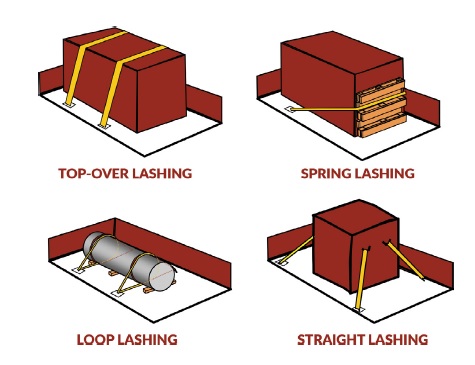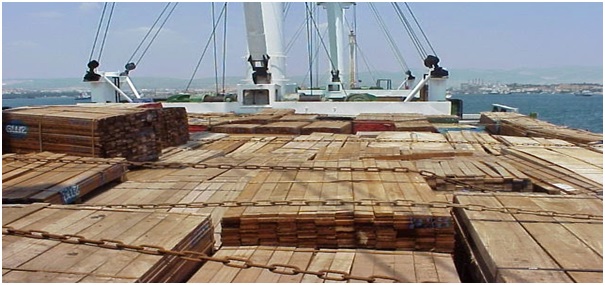Lashing arrangements
In order to achieve a more secure stowage of logs when stowed on deck hog wires may be utilized. Such hog wire should be installed in the following manner:
- At approximately three quarters of the height of the stow, the hog wire should be rove through a padeye attached to the uprights at this level so as to run transversely, connecting the respective port and starboard uprights. The hog lashing wire should not be too tight when laid so that it becomes taut when overstowed with other logs.
- A second hog wire may be applied in a similar manner if the height of the hatch cover is less than 2 m. Such second hog wire should be installed approximately 1 m above the hatch covers.
- The aim of having the hog wires applied in this manner is to assist in obtaining as even a tension as possible throughout, thus producing an inboard pull on the respective uprights.
Note :
In addition to uprights and hog lashings, an arrangement with top-over and continuous wiggle lashings (wiggle wires)





Do we need to hog wire lashing on deck,when we carry the swan timber?
go to http://www.looplashings.com for the only seamanship way of preventing racking. Hog wires do absolutely nothing to implement a bracing element.
I note your picture is of a 60’s v/l with 2.5mt Union Purchase – these have not been seen for decades
We have to be careful about endorsing a lashing method can that only ever fail when under stress – and this is acknowledged by such bodies as P&I, and those who understand the folly of top-over lashing for anything other than in sheltered or inland waterways.